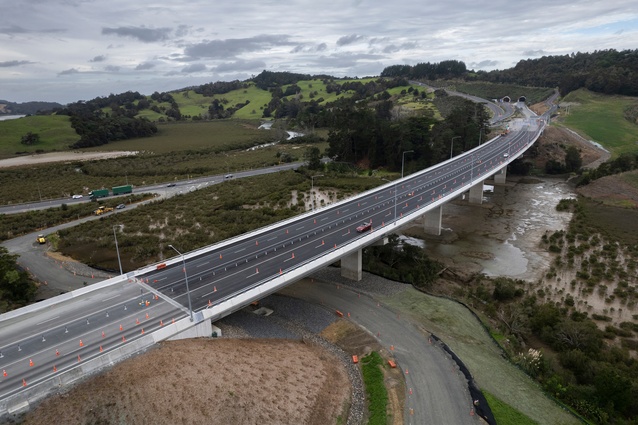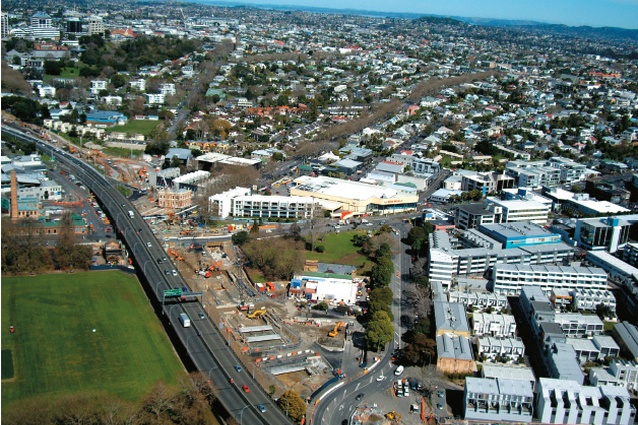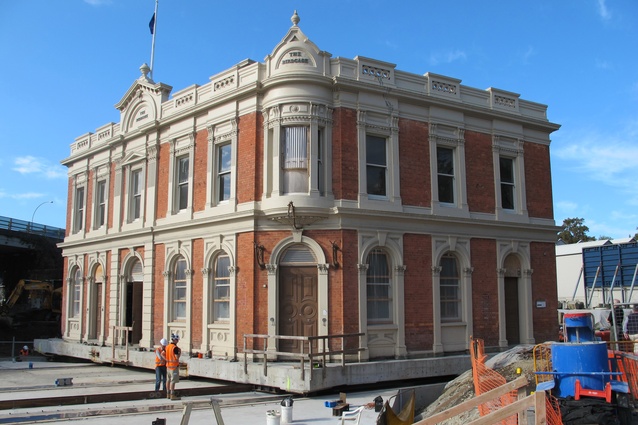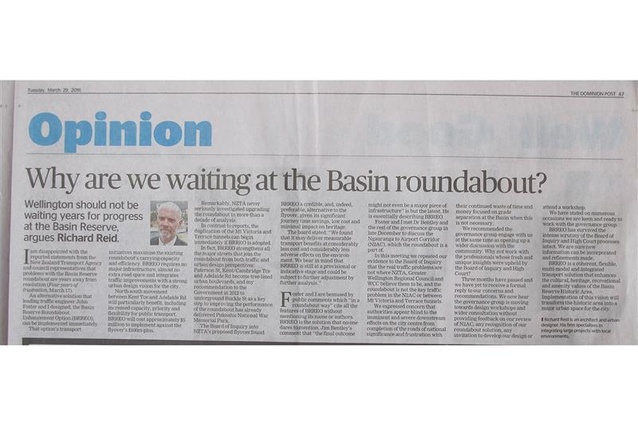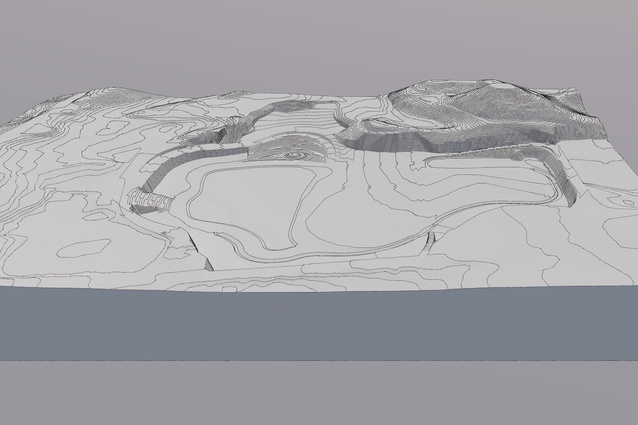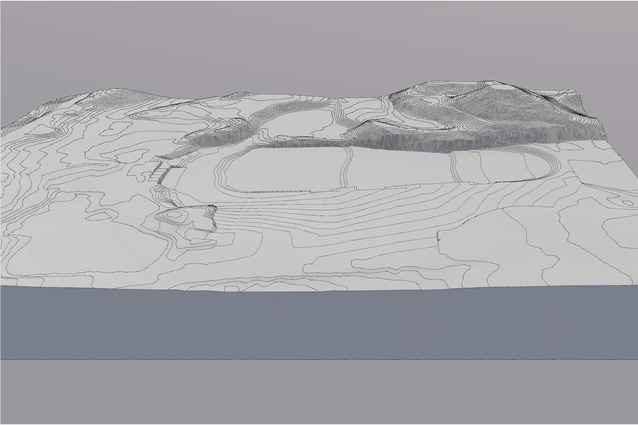Fast-track Approvals Act – a race to the bottom?
Opinion: Richard Reid provides his observations and insights on the Fast-track Approvals Act, drawing from his 25 years of assessing and designing nationally-important infrastructure and urban renewal projects.
The Fast-track Approvals Act 2024 [The Act] came into force on 23 December 2024. In its simplest terms, the Act aims to establish a permanent fast-track regime that makes it easier and quicker to gain approvals for infrastructure and development projects that deliver significant national or regional benefits.[i]
More than 25,000 public submissions were made on the proposed Act [the Bill], with the vast majority of submitters opposing it.[ii]
Key issues raised by submitters were the potential politicisation, secrecy and speed of the decision-making process; the significant reduction in status and weighting of the environment in the assessment of ‘beneficial’ projects; removal of the RMA s8 requirement to take into account the principles of te Tiriti o Waitangi; and the almost total exclusion of public participation in the consideration of applications.
My submission focused on providing real-world, practice-based feedback,utilising the extensive project experience we have gained over the past twenty five years.[iii]
My design practice specialises in integrating large projects into local environments. We work on the kinds of projects which have been earmarked for fast-tracking under the Bill: nationally important infrastructure projects and key urban renewal projects, often sited within complex and sensitive environments.
The thoughts which I set out both here and in my submission are borne from the challenges and opportunities of working on these projects.
Ambition versus reality
The governance regime and procedures outlined in the Act means that the planning and design of fast-tracked projects will largely avoid the checks and balances that typically result from public processes and public participation. In essence, this is the intention of the legislation.
The Act therefore places a huge onus on fast-tracked applications to be sound in conception and sensitively tailored in their fit. Yet, based on our evaluation of proposals over the past 25 years, public and corporate organisations do not have the planning and design expertise, nor a concern for the ethos of a project, to competently deliver the ambitions of the Act.
Most of the large-scale infrastructure and urban development plans proposed in recent years, certainly in Auckland and Wellington, have struggled to gain traction or approval, unless or until, significant remedial action was forced to be taken by the public.
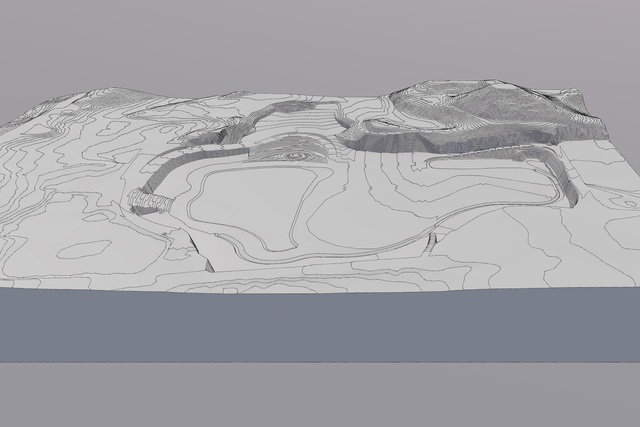
In our opinion, any hurdles faced by these projects were mostly created by the poor judgement and low skill level of the organisations responsible for their conception and approval.
From our perspective, applicants have too often adopted outdated techniques in inappropriate places, with unsatisfactory decisions promoted as the need for reform.
The persistent calls from business and infrastructure representatives to overhaul the RMA and create an exclusive fast-track consenting process have distracted attention away from these significant weaknesses.
Predictably, Infrastructure New Zealand, the national member association, submitted in support of the Fast-track Approvals Bill, viewing it as the paradigm shift needed to correct long, slow and costly consenting processes [iv], without acknowledging the industry’s fundamental role in contributing to those expensive delays.
In particular, specialist technical professions are employed who do not know how to integrate large projects into urban or sensitive environments. Conceptual designs, especially in relation to land transport infrastructure, are mostly formulated by engineers, whose worldview and skillset are not equipped to engage with contextual complexity.
Typically, green-field or grade-separated solutions are proposed as a way to avoid constraints and increase flexibility, all of which generates extreme costs, sacrifices significant land-use investment opportunities and produces poorly defined urban form.
Secondary consultants, such as landscape architects and urban designers (with architects largely absenting themselves) seem to have little power or insights to shift this approach. Yet their appreciation for context should make the critical, and in our view, necessary difference.

A race to the bottom
The Treasury’s assessment aligns closely with our experience. In its briefings to the Government, it warned the country’s historic under-performance on large projects (poor strategic thinking, poor planning, poorly scoped investments, premature applications, and preference for higher cost interventions) cannot continue, and rightly noted that the fast-track legislation may accentuate these failings [v].
Te Waihanga New Zealand Infrastructure Commission has just published a draft National Infrastructure Plan (NIP) which provides a textbook analysis of these problems, benchmarked against sound governance principles, and with recommendations on how to overcome them.[vi]
Yet nowhere does the NIP discuss – or even mention – the potential implications of the Act, and the strong attraction and likely use of it by both applicants and central government alike to circumvent tried-and-tested processes and qualitative outcomes.
The overriding purpose and power of the Act will surely mean that commercial acumen and political expediency will continue to focus on short term interests and returns.
The NIP acknowledges that New Zealand needs to ‘lift its game’, yet it seeks the same means of achieving this as industry representatives, by “reducing costs or easing the regulatory environment”.[vii]
The NIP’s call for ‘smarter’ planning, in fact, means equipping planning with the tools to create an “enabling environment” which “clears the way for infrastructure”[viii]. A people-mover, in effect.
This approach is wholly different to The Treasury’s demand for smarter execution, which in practice requires more rigorous and accountable processes rather than the ruthless acquisition of semi-autonomous governance.
The NIP suggests lifting the game “might also mean taking a more commercial approach to infrastructure whereby we vastly lift the bar on project quality, finding new projects that households and businesses will be willing to pay for.”[ix]
A real fear is not only will the Act socialise the costs of large projects, the NIP will ultimately call for communities to pay for any additional ‘lift’ in the poor quality of outcomes.[x]
In our opinion, without the public’s ability to fully participate, to challenge proposals or decisions, the Act will effectively lower standards to the level of ability of those who are unable, or perhaps unwilling, to meet current requirements. This will create a vicious circle of ever declining standards in professional services and environmental outcomes.
The public’s essential role in forming our urban environments
The ‘one-stop shop’ process enabled by the Act is therefore deeply concerning because it will protect inferior applications from being subject to the level of scrutiny and testing which always comes with public notification.
We provided nine case studies in our submission where the opening up of important infrastructure applications to public scrutiny and independent expert assessment led to significant improvements, and often, radical transformation of the design.
Of special relevance, eight of the nine projects were roads of national significance (RoNS) or their equivalent back in the day[xi].
Over the past twenty five years, government agencies have spent - and consultants have been paid - billions of dollars developing infrastructure plans for these projects, only to end up building the public’s better ideas.

This includes the SH1 Ōrewa to Pūhoi Northern Gateway Motorway; the SH1 Victoria Park Tunnel Motorway andSH20 Mt Roskill Extension Motorway in Auckland; and the SH1 Buckle Street Underpass in Wellington, to name a few.
In almost every project, the methodology and key features approved or adopted for them were proposed by the public, not the organisation responsible for planning them.
The public’s formative contribution to these significant projects does not fit the narrative of those promoting the Act. The so-called ‘obstruction economy’[xii] is, in reality, one which has monetised systemic failure.
The legacy of Muriel Kett

The SH1 Ōrewa to Pūhoi Northern Gateway Motorway (1992–2009) is a case in point.
Muriel Kett, a local landowner, unsuccessfully appealed resource consents granted to Transit NZ to both the Environment and Supreme Courts, on the basis that “the depth of cut proposed for the alignment of the motorway through Johnstone’s Hill was incorrectly calculated and would be unstable.”[xiii]
She commissioned an alternative design from Peter Riley, an expert in rock mechanics, who replaced the transport agency’s proposed cut with twin tunnels through the hill approached by a low causeway across Waiwera River.
I understand that after defending itself through two extensive legal processes, Transit NZ sought independent advice from Australian geotechnical experts who confirmed Kett’s and Riley’s analysis. Transit NZ subsequently changed its plan and built Riley’s tunnels and causeway instead, as we see today.
Thinking about what’s best for the city
The methodology and main features of the SH1 Victoria Park Tunnel Motorway Project (2004-11) in central Auckland were also proposed by the public.
Transit NZ’s initial concept for increasing the capacity of traffic across Victoria Park consisted of a duplicate flyover beside the existing structure. A local community group, the St Mary’s Bay Association, developed its own methodology (again with Peter Riley) and recommended a cut-and-cover trench so that public use of the park could continue to be maximised.
When Transit NZ declined this approach due to its perceived cost, the association commissioned its own preliminary estimate which showed that a cut-and-cover trench was no more expensive than a flyover. Transit NZ proceeded with the trench.
My practice (RRA) recommended the Birdcage Hotel, an 1886 building sited on the original foreshore of Freemans Bay, should be returned to its position on top of the tunnel entrance instead of being permanently relocated off-site.
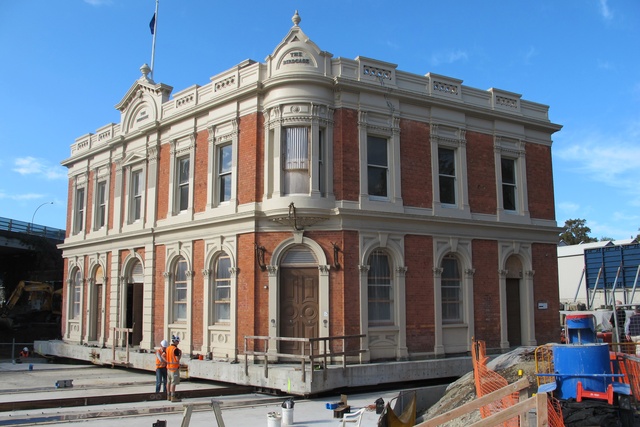
The return of the hotel would enable the building to retain its prominent position in the neighbourhood and future-proof the finely proportioned space in front of the building which could become a civic square in the future, with removal of the existing flyover as part of another harbour crossing.
We worked out that the tunnel portal would need to be moved back by only 10 metres to achieve this. Transit NZ declined our proposal due to its perceived cost, stating that moving the hotel only once would cost upwards of $10million. Four years later, Transit NZ finally agreed, and the cost of moving the hotel twice was found to be less than $2.5million.
Wellington’s wobbles
Since 2011 close to five hundred million dollars has been spent planning a SH1 corridor through the central city of Wellington without NZTA producing a design which is close to resolution or consent.
This includes NZTA’s proposed flyover beside the Basin Reserve Cricket Ground which a government-appointed Board of Inquiry declined in 2014; and the Let’s Get Wellington Moving programme that followed, led by NZTA, which was cancelled by the present government in early 2024.
The project has since been renamed the SH1 Wellington Improvements Project, classified as a RoNS[xiv] and listed in Schedule 2 of the Act as a project which can apply for fast-tracking. The NZTA Board has confirmed the scope of work includes a new Terrace Tunnel and Mt Victoria Tunnel.
In the most recent planning reports we have obtained (which date back to 2020-21)[xv], the preferred options for the project entailed wholescale transformation of the central city motorway corridor. NZTA carried these options through to investment case development in January 2025, which will be submitted to the NZTA Board for approval in early August.
This programme of work would cost many billions of dollars (as much as a long tunnel under the city), create many years of severe disruption (as the city will require the existing motorway to remain open for traffic) and any benefits would only accrue on the final and total completion of all components (as opening each stage would cause traffic overload for the rest of the corridor).
The Government, however, does not have the fiscal resources to build NZTA’s preferred option/s. Will it decide to fast-track the project preferred by LGWM/NZTA at any cost and whatever the impact? Or draw on advice from The Treasury, Te Waihanga and independent experts such as our practice, to produce something more sensible, affordable and achievable?
The return of BRREO
Back in 2013-14, my practice proposed an alternative to NZTA’s flyover, the Basin Reserve Roundabout Enhancement Option (BRREO) in collaboration with traffic engineer John Foster. We submitted BRREO to the Board of Inquiry on behalf of the Mt Victoria Residents Association.
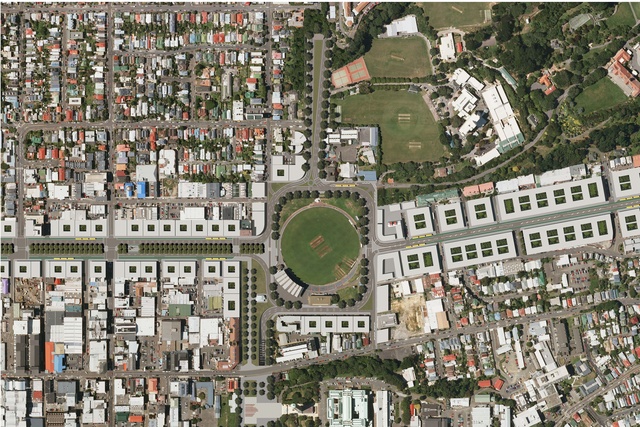
BRREO ingenuously incorporates extra traffic lanes and bus rapid transit within the existing road space of the roundabout. The deceptively simple re-arrangement and additional capacity, combined with grade-separation of Buckle Street (another RRA initiative, which formed Pukeahu National War Memorial Park above)[xvi] meant that an expensive, heavy engineering structure was not required.
BRREO also strengthens the definition of the roundabout within the city plan, as well as the major streets meeting it, including the city gateway from the east. The upgrade to SH1 is essentially disguised within this higher order of citymaking, making BRREO an invisible fit with its surroundings.
The Board of Inquiry recognised that both the flyover and BRREO delivered significant journey time savings while also highlighting that BRREO did so with minimal cost and impact.[xvii]
Remarkably, LGWM and NZTA did not see any value in BRREO, and have never engaged with us to better understand BRREO or to develop its thinking or design, as the Board recommended it should do.
Given both the unaffordable and implausible vision NZTA chose to advance for investment case development this year, we have returned to BRREO and extended its design to encompass the wider scope of the SH1 Wellington Improvements Project.
Our comprehension of the issues is the same as for the Basin Reserve Roundabout: namely, transport improvements to the existing network have not been adequately considered, and an alternative solution, whose costs and impact are significantly less than NZTA’s preferred options, can meet both the government’s and city’s objectives for the project.
Through this work, we can confirm that the DNA which is unique to BRREO - three lanes on SH1 in each direction - can answer the wider project’s objectives in a very simple way.
We note that the recent planning reports did not see any value in extending BRREO. We do, and have re-named our proposal the Basin Reserve Roundabout Extension Option. BRREO maintains the roundabout as the key pivot point and major traffic distributor for the city, which has always been our objective for working on this project.
Opportunity cost
In this way, we return full circle to the premise of our submission. Only through action taken from outside of the organisations responsible for planning infrastructure have most things of substance and enduring value been achieved.
We asked the Select Committee reviewing the Fast-track Approvals Bill to consider what the long term implications and opportunity cost might be from removing the public and independent expert thinking from important planning processes, such as those legislated by the Act.
The weight of evidence suggests that the public is more judicious in its assessment of adverse effects than many organisations and their consultants, and is able to create realistic alternatives with measurable national and regional benefits.
The recognition of this is best encapsulated by a resource consent decision declining a nationally important transport infrastructure proposal at Onehunga in 2007:
“The Auckland City Commissioners witnessed the significant positive involvement of submitters from the local community, who together with Māori, have put forward a well-considered package of alternative options. The community response overall reflects a more balanced approach.”[xviii]
Productive citymakers
It appears that New Zealand is developing a strong resistance to complexity - like many other western countries, it must be said - even though we are one of the least-regulated developed societies in the world.
Traditionally, investment in higher education and training, R+D, enlightened policy and the benchmarking of standards have been seen as the most effective ways to work through complexity, and the most productive way to optimise higher value returns.
Recent legislation suggests we are more comfortable heading in the opposite direction.
The ambitions of the Act should have required, at the minimum, major upskilling and greater accountability of organisations and professionals.
To help, our submission outlined the kind of methodologies we have found works successfully with the real-world complexities of New Zealand’s planning system.
Our main insight is that proposals experience the most difficulty in gaining consents where they are located within sensitive urban contexts. In these types of situations, constraints on space and conflicts with the existing environment and communities are at their greatest.
We have found the most profitable areas for investigation are, not surprisingly, the contextual issues which top-down thinking and technocratic approaches find the most challenging.
Faith must be placed in locals’ lived experience and astute feedback. A positive relational approach must be achieved with the surroundings, and a more permeable and inclusive infrastructure created. People must be able to stay joined to places. Projects should contain a value exchange proposition which communities’ sense is wise, worthy and healthy to support.
In this day and age, it is entirely reasonable for the public to expect integrated and holistic solutions which embrace the environment and local communities. Plainly, this should be the standard rather than the exception. The Act trades this sense of public wellbeing for the protection of a very different set of principles.
References
[i] For a summary of the Act and the process it went through to become law, see Ministry for the Environment https://environment.govt.nz/acts-and-regulations/acts/fast-track-approvals/
[ii] https://bills.parliament.nz/v/6/083f0a7b-f182-41d5-0897-08dc3e31559c?Tab=sub
[iv] Infrastructure New Zealand submission, para 2.2 -2.7, p2-3
[v] See Phil Pennington, RNZ, https://www.rnz.co.nz/news/business/528940/business-cases-for-large-roading-projects-disconnected-from-reality-ministry (25 September 2024) and https://www.rnz.co.nz/news/political/535175/treasury-warns-government-about-overspend-poor-planning-on-major-infrastructure-projects (29 November 2024)
[vi] Te Waihanga New Zealand Infrastructure Commission, Draft National Infrastructure Plan, published 25 June 2025. See https://tewaihanga.govt.nz/draft-national-infrastructure-plan
[vii] Draft NIP, p5
[viii] Draft NIP, p12
[ix] Draft NIP, p5
[x] We have seen comments from Te Waihanga that explores this scenario.
[xi] Both The Treasury and Te Waihanga recognize the governance and oversight of land transport infrastructure “needs particular attention”, Draft NIP, p55.
[xii] “Fast Track Approvals Bill - New Zealand has become an obstruction economy, says Chris Bishop”, NZ Herald, 26 April 2024. See https://www.nzherald.co.nz/nz/fast-track-approvals-bill-new-zealand-has-become-an-obstruction-economy-says-chris-bishop/MMDGW5QK4VEETHJK2LISLJY2VE/
[xiii] Forest and Bird Magazine 350, Nov 2013, p8
[xiv] The SH1 Wellington Improvements Project is the only project in the Government’s seventeen proposed RoNS schemes that is situated within a sensitive urban context; one, more so, that is recognised as a historic environment of national importance (the Basin Reserve Historic Area).
[xv] Through an OIA request, we obtained ‘Let’s Get Wellington Moving, Initial Corridor Plan (ICP), Strategic Highway Investment Business Case’, 30 September 2020 and Cover Letter, dated September 2021.
[xvi] The SH1 Buckle Street Underpass was another project we outlined in our Fast-track Approvals Bill submission. The Government’s decision to underground the SH1 section of Buckle Street in front of the National War Memorial in Wellington was recommended by RRA to Hon. Chris Finlayson, Minister of Arts, Culture and Heritage, in May 2012. The trenching of this road to pass under Tory Street enabled the creation of the car-free Pukeahu National War Memorial Park in Wellington (opened 2015). Unlike NZTA’s traffic plan at the time, our solution for the Basin foresaw that an underpass would significantly improve journey times; in fact, by NZTA’s later calculations, four times more than their proposed flyover.
[xvii] Basin Bridge Board of Inquiry, 2013–14. The Board highlighted evidence from NZTA that both the flyover and BRREO “displayed significant journey time savings over the do-minimum scenario”, however it concluded: “We found that BRREO may … deliver measurable transport benefits at considerably less cost and considerably less adverse effects on the environment.”
[xviii] Auckland City Council commissioners’ decision, Transit NZ designation and resource consent application, SH20 Manukau Harbour Crossing Project, Onehunga, Auckland, 2007.


